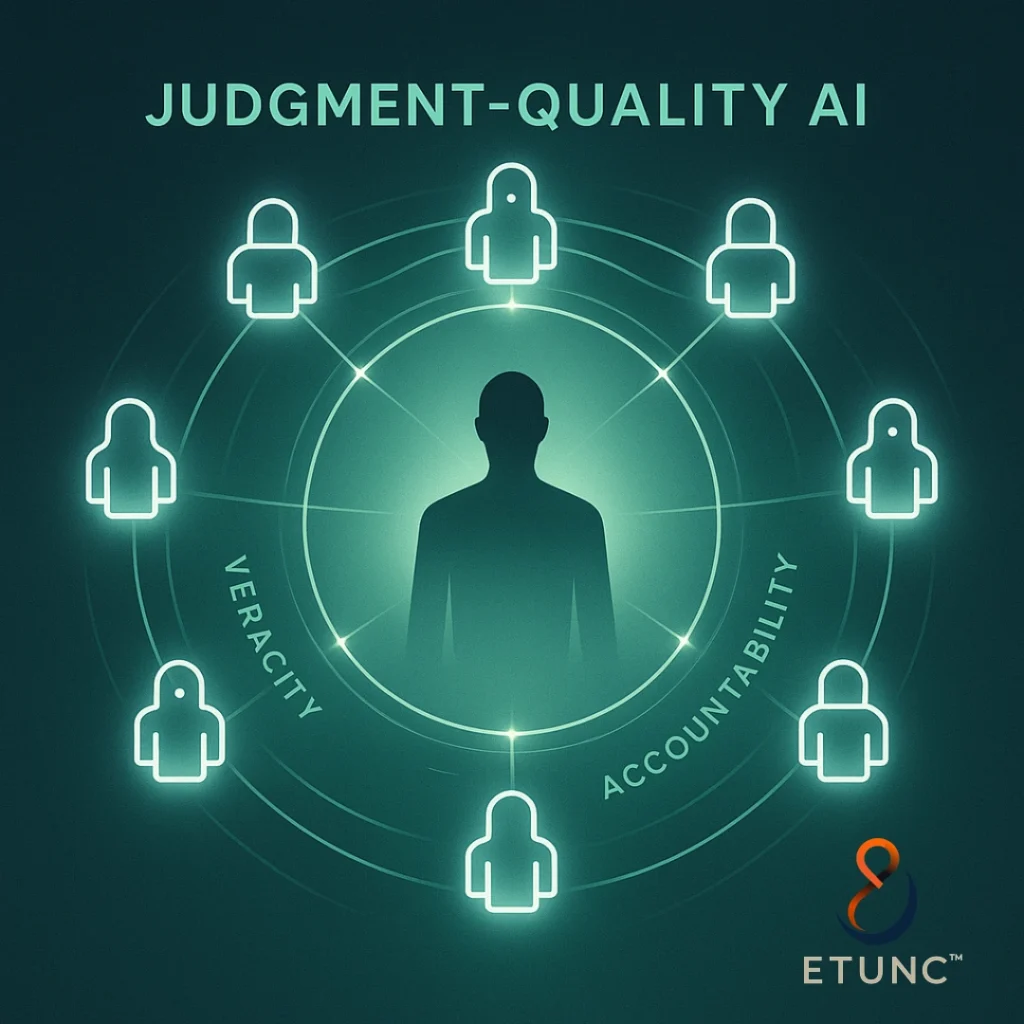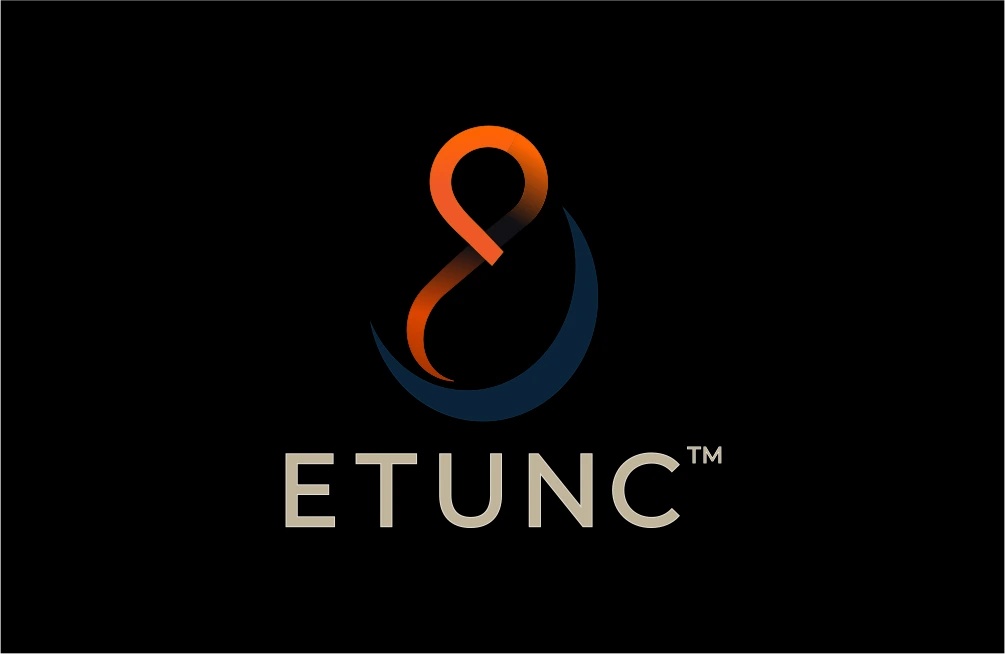
Introduction
The convergence of agentic orchestration, neuro-symbolic hybrid reasoning, and compliance-first frameworks is redefining how artificial intelligence earns trust. For ETUNC.ai, this is not a theoretical shift — it is validation in motion. Recent research reveals a world rapidly aligning with ETUNC’s foundational model of Veracity, Plurality, and Accountability (VPA), where intelligence is measured not by speed or scale, but by judgment quality.
This week’s research highlights showcase how multi-agent governance, dual-mode cognition, and policy-based validation are becoming central pillars of AI design — principles that ETUNC embedded from inception.
1. The Rise of the Manager Agent: Governance at the Core
A newly published study, “Orchestrating Human-AI Teams: The Manager Agent as a Unifying Research Challenge” (Oct 2025), reframes the notion of orchestration as a governance challenge.
Rather than viewing agents as siloed executors, it defines a Manager Agent that decomposes objectives, allocates tasks to humans and machines, and ensures compliance within transparent boundaries.
The model formalizes orchestration as a partially observable stochastic game — a mathematical structure where each participant’s limited perspective is acknowledged. This mirrors ETUNC’s Envoy–Guardian duality, where cognitive decentralization enables ethical coordination under uncertainty.
Veracity emerges through measurable evaluation loops.
Plurality is embodied in mixed human–AI collaboration.
Accountability becomes a structural imperative, not an afterthought.
2. Policy-as-Code: Accountability Meets Automation
The MACOG (Multi-Agent Code-Orchestrated Generation) framework, also published this month, demonstrates policy-aware orchestration at scale.
In this system, specialized agents — the Architect, Reviewer, Security Prover, and Cost Planner — interact via a shared blackboard and Open Policy Agent (OPA) integration to validate outputs before deployment.
By embedding governance and auditability into the creative process, the MACOG framework transforms compliance from oversight into architecture. This is the kind of traceable logic chain that ETUNC’s Guardian Framework operationalizes — proving that accountability and innovation are not opposing forces, but complementary disciplines in intelligent systems.
3. Dual-System Reasoning: The Cognitive Parallel
In MARS: Optimizing Dual-System Deep Research, the concept of System-1 (fast, intuitive) and System-2 (slow, deliberate) thinking is implemented within a single model architecture.
Through reinforcement learning and multi-tool integration, MARS simulates a distributed cognition loop — fast models generating ideas, slow models evaluating and refining them, each leaving a transparent reasoning trace.
ETUNC’s own architecture resonates deeply with this dual-system logic. Its Resonator layer acts as the reflective system — slowing down reasoning when ethical or factual ambiguity arises — while the Envoy system routes high-confidence outputs swiftly. This separation of speed and scrutiny reflects how human judgment itself balances intuition and reflection.
4. Compliance-First Agents: The Ethics in Engineering
A multilingual agentic framework for healthcare, introduced under the MCP architecture, embodies the design principle that compliance is not an accessory but a foundation.
By emphasizing privacy, access control, and transparency, it exemplifies how agentic systems in regulated fields must build Veracity (data integrity), Plurality (language and context diversity), and Accountability (explicit governance boundaries) into their DNA.
For ETUNC, such research underscores a global movement toward compliance-by-design — where ethical architecture precedes application.
5. Contradiction as a Test of Truth
The ContraGen framework introduces a breakthrough method for stress-testing AI systems through contradiction-rich corpora.
By generating documents filled with deliberate inconsistencies and validating them through human-in-the-loop (HITL) review, researchers can now measure how well AI models detect, reconcile, and reason through conflicting narratives.
For ETUNC’s Veracity–Plurality alignment, this method provides a mirror: truth is not monolithic but must withstand contradiction.
By building systems that identify tension rather than erase it, AI can evolve from simple accuracy to epistemic integrity — the ability to preserve truth across differing contexts.
Thematic Convergence: From Intelligence to Judgment
This week’s findings converge on one central truth: the frontier of AI innovation is not cognition itself, but judgment — the ability to reason under uncertainty, justify decisions, and remain accountable within complex systems.
- Governance-first orchestration (Manager Agent) ensures decisions are structured and explainable.
- Policy-as-code frameworks (MACOG) fuse automation with auditable ethics.
- Dual-system reasoning (MARS) balances speed with deliberation.
- Compliance-aware designs (MCP) normalize transparency.
- Contradiction-based testing (ContraGen) transforms error into evolution.
Together, these reveal the path that ETUNC has already charted: a judgment-quality intelligence guided by its VPA compass — Veracity as the measure of truth, Plurality as the measure of fairness, and Accountability as the measure of trust.
Next Week’s Watchlist
- Advances in mechanistic interpretability and sparse coding for rule extraction.
- Evolving natural-language control layers for structured reasoning.
- Trends in enterprise trust calibration and safety evaluation frameworks.
Call to Collaboration (CTC)
Follow ETUNC.ai to explore how Veracity, Plurality, and Accountability redefine judgment-quality AI — where alignment begins with integrity.
Let us know what you think. – Contact
